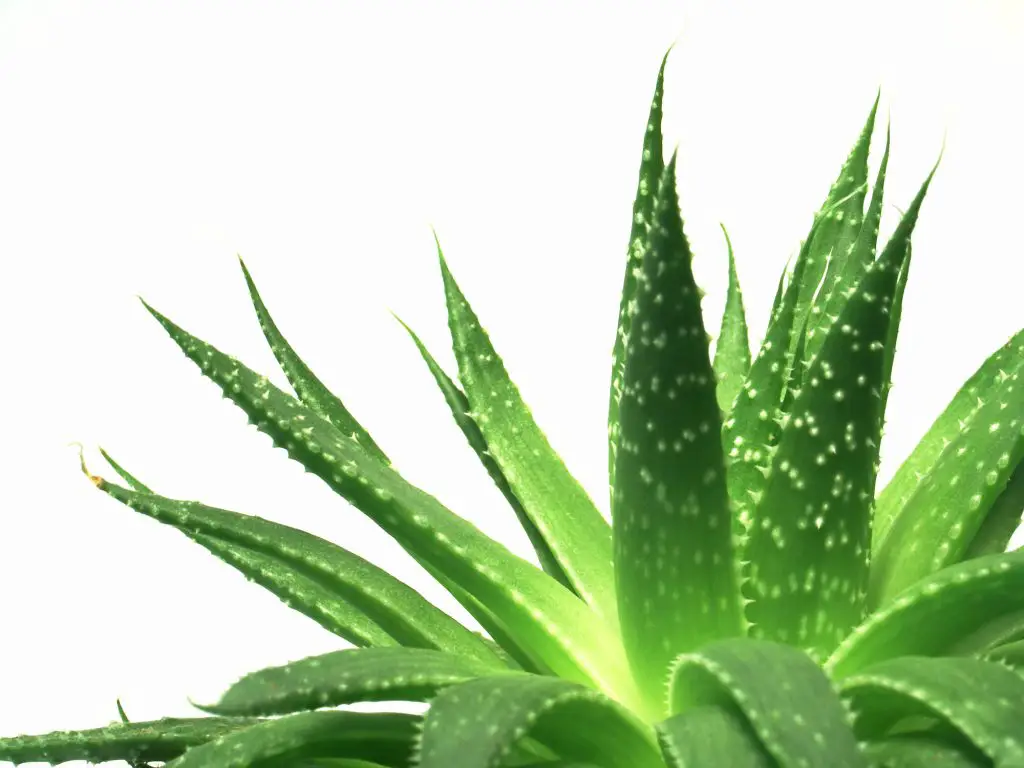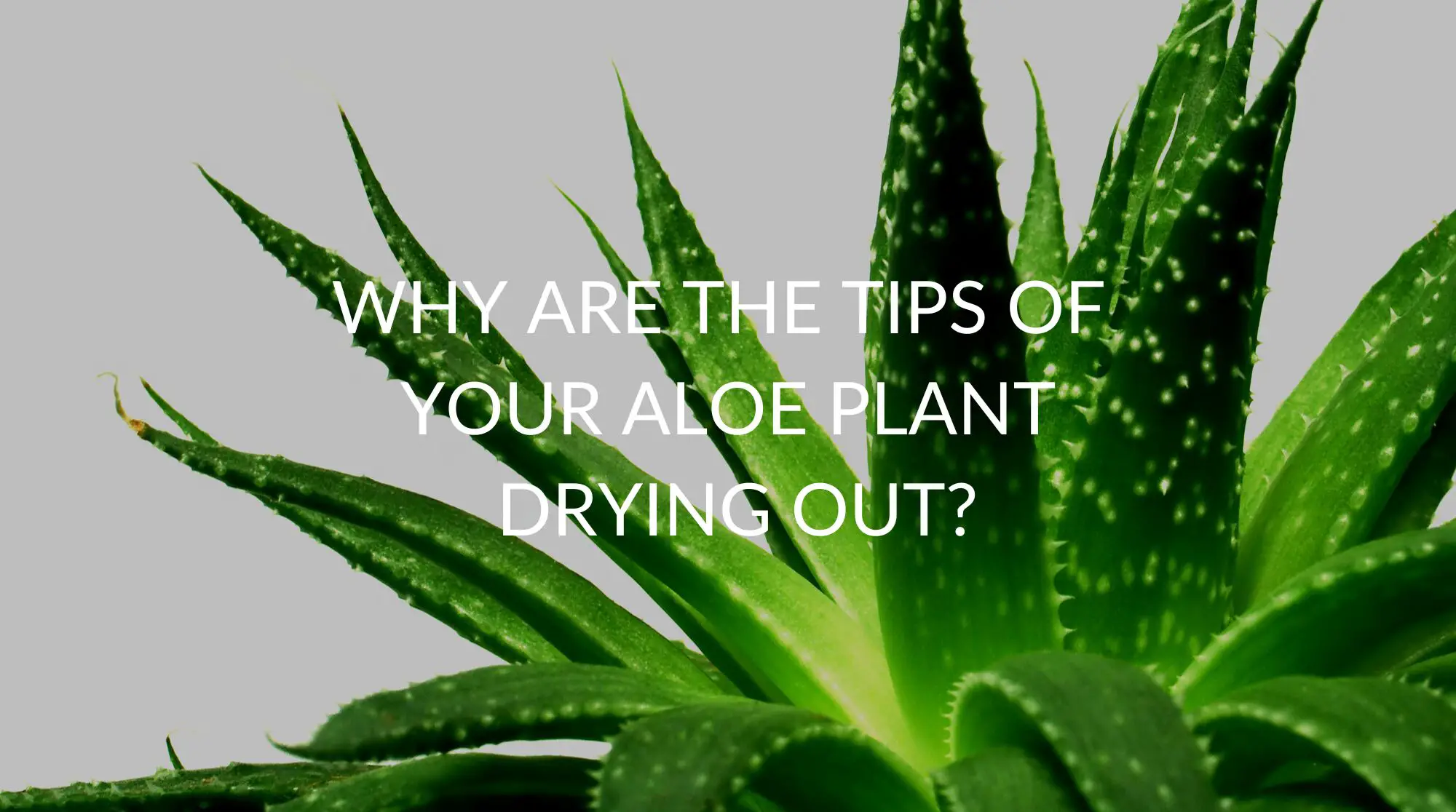Aloe plants are the perfect addition to any home. They have a great appearance that brightens up a room. They are part of the succulent family, so they can be a great option for first-time plant owners.
That being said, things can go wrong. What do you do if the tips of your aloe plant are drying out? First, do not worry. This article will dive into several reasons and ways you can combat the problem and get your aloe plant back in tip-top shape. Read on to find out the most common reasons your aloe plant has dry ends.
Why Are the Tips of Your Aloe Plant Drying Out?
There are several reasons the tips of your aloe plant may be drying out. Most often, this can happen if there is not enough water available to your plant. However, there are several specific reasons your plant may not have enough water, and it is important to identify the underlying cause.
Not Enough Water
Aloe Vera plants do not require much water. However, when they are receiving insufficient amounts of water, the leaves can dry out. It is easiest to identify if this is the cause of your plant’s dryness if the centers of the leaves are still hard and firm, but the edges are crisp and dry.
Too Much Direct Sunlight
Aloe Vera plants naturally grow in deserts. They need a decent amount of natural light to thrive. However, if your plant is placed in direct sunlight for long periods, it can dry out. You can test if this is the reason your plant is drying out by moving it to an area with slightly less light.
Too Much Heat Intensity
While Aloe Vera plants grow in the desert, they can dry out if they experience long periods of temperatures around or above 80-90 degrees Fahrenheit. This extended heat will trigger dormancy in the plant, so it will drop leaves and stop growing.
Insect Infestation
Insects can damage the health of a plant. As the plant deteriorates, it may drop leaves in an attempt to protect the rest of the plant. Examine your plant and see if you can find insects crawling on your Aloe Vera.
If your Aloe Vera plant has been infested with insects, it is important to find out which bugs are on your plant, so you can move forward with the proper treatment.
Root Rot
Root rot usually occurs when a succulent has been overwatered or if there is insignificant drainage in the pot. Check for signs of decay around the roots of your Aloe Vera. You may notice an odor or a lack of growth that can signify rot in your plant.
If the root rot has reached your stems, unfortunately, it is too late for your Aloe Vera.
Dry Rot
Dry rot is similar to root rot, but it can be more difficult to detect. Generally, if you notice the leaves have died on your Aloe Vera plant due to dry rot, it is already too late. Make sure to discard the soil, as dry rot can travel through soil, and you do not want it to spread to your other plants.
Damage from Freezing
Aloe Vera plants are accustomed to warmer climates. If they spend time in colder temperatures, they can freeze. The cells in the plant can die, and the leaves will dry out and break.
Not Enough Light
In general, insufficient lighting will not directly lead to dried leaves on an Aloe Vera plant. It can, however, encourage root rot or pest infestations. Low light can also generally affect the health of your Aloe Vera plant, making the plant less resilient.

What to Do If the Tips of Your Aloe Plant are Drying Out
Do not panic if the tips of your Aloe Vera plant are drying out. Once you have identified the problem, you can generally remedy it and return your Aloe Vera plant to the picture of perfect health.
Make Sure Your Aloe Vera Has Adequate Light
As we discussed earlier, too much direct sunlight can dry out your Aloe Vera plant, but also, too much darkness can make your Aloe Vera more prone to other problems. Ideally, your plant should sit in a sunny warm spot. If you worry that it is exposed to too much sunlight, you can move it to a place with 1-2 more hours of shade during the day.
Clear Insect Infestations with Soap or Garlic
If your Aloe Vera plant has become infested with insects, you will usually find discoloration in addition to dryness on the leaves. You can clean the leaves with a soap solution or a garlic solution that should remove the bugs.
If you discover that the infestation is widely spread, you may need to use chemical insecticides to save your Aloe Vera plant. Many options are available at most plant stores for this solution.
Ensure Your Pot Has Proper Drainage
Making sure your plant is not overwatered is important to protecting your Aloe Vera from disease. Make sure your pot has drain holes to let out excess water when you water your plant.
Make Sure Your Plant Has Enough Water
Aloe Vera is part of the succulent family, which means they do not need too much water. Be careful to make sure you are not underwatering them, though. You should generally water your plant every two to three weeks. Check in regularly to make sure your plant is not being over or underwatered between that time.
Keep Your Aloe Vera in a Warm Location
Aloe Vera plants will suffer if they freeze. Make sure you protect your plant from freezing weather. This may mean you need to move it during the winter or colder periods.
Make Sure Your Pot is the Right Size
Your Aloe Vera plant may suffer if the pot is too small. It will stop the growth process in an attempt to fit into the pot. This can cause issues with the roots or the overall health of your plant.
Make sure your pot is at least three to six inches across and three to four inches deep.
Do Not Overwater Your Aloe Vera
Overwatering your Aloe Vera can make the leaves turn yellow or brown. It can also cause root rot. Be sure to only water your plant until the soil is moist. You only need to water Aloe Vera plants every two to three weeks, so if you are currently watering more than that, scale it back and let the soil dry more.
Should I Cut the Brown Tips Off My Aloe Plant?
If the leaves on your Aloe Vera plant are beginning to dry, gentle pruning can help restore your Aloe Vera to health. Use sterile pruning shears to gently cut off any brown tips or full leaves. This process can help your Aloe Vera plant focus its energy on new growth.
When you cut the brown tips off of your Aloe Vera plant, make sure you monitor the plant and water properly to ensure they will not dry out again. Also, if insects are causing the tips to be crisp and dry, you will need to treat the insect infestation before your plant will be healthy again.
Recap
Aloe Vera plants are most comfortable in desert climates, but they still need proper care. This acclimation means your Aloe Vera plant will suffer if it has too much or not enough important nutrients.
The most common reasons an Aloe Vera plant will dry out are insufficient or too much sunlight, insect infestation, lack of water, and disease.
You can treat your Aloe Vera plant by adjusting the amount of sunlight it gets, giving it more water, and treating any insect infestations that have made their way into the plant. If you catch root rot early enough, you can attempt to treat the disease.
You can also trim the edges of browned leaves to restore your Aloe Vera plant to health.








